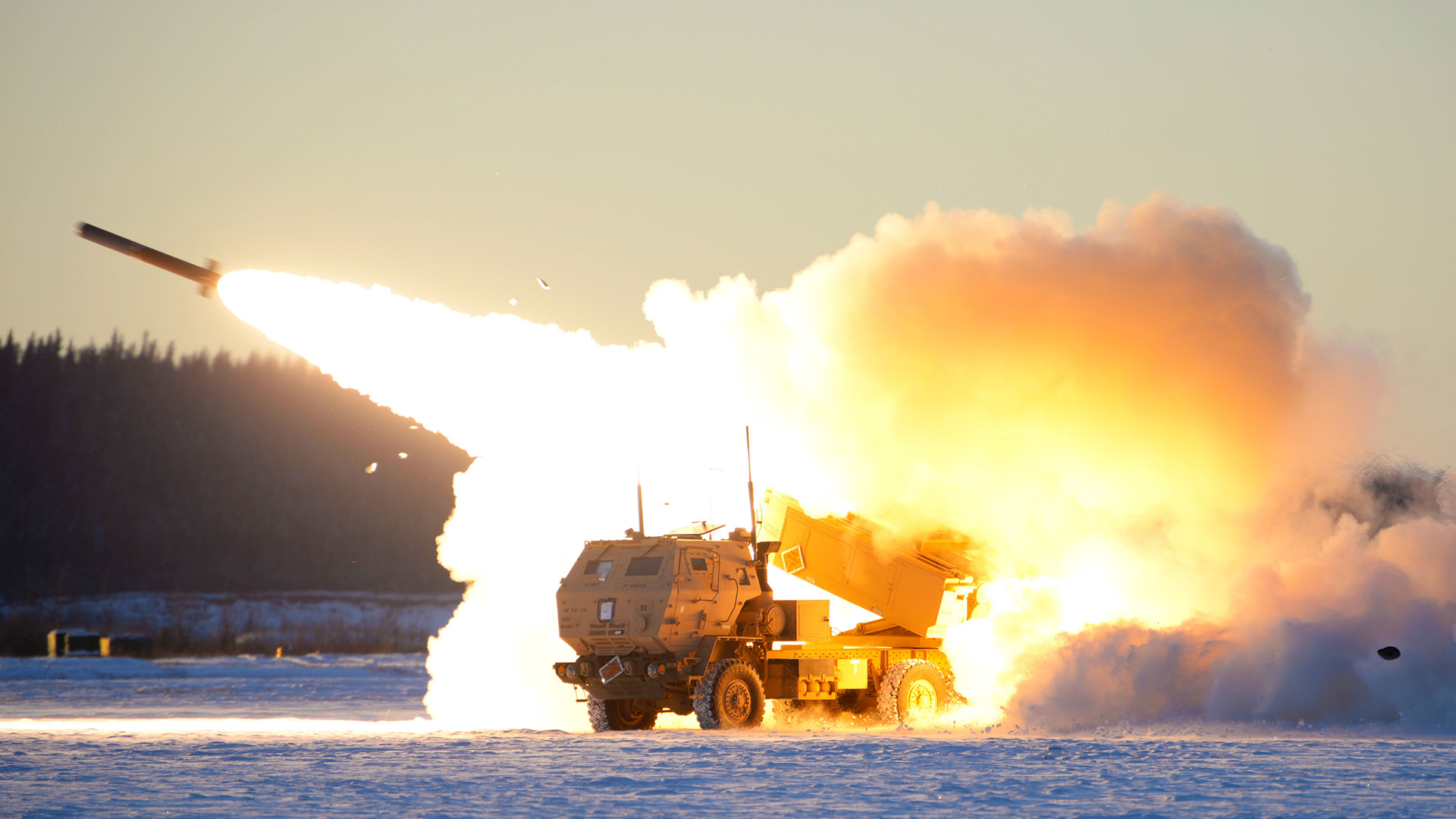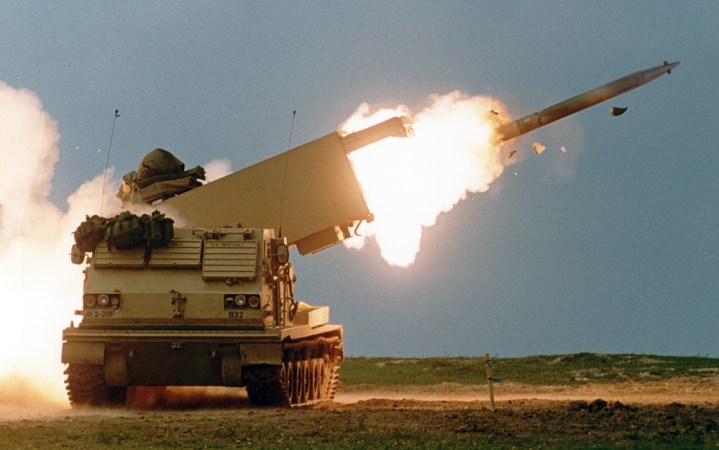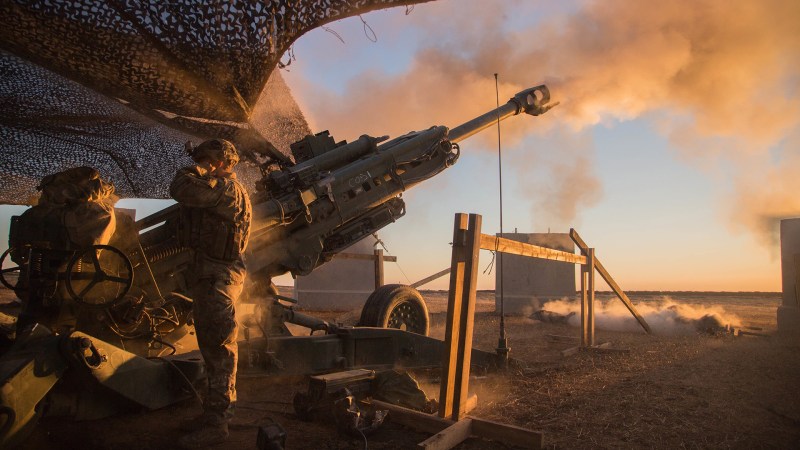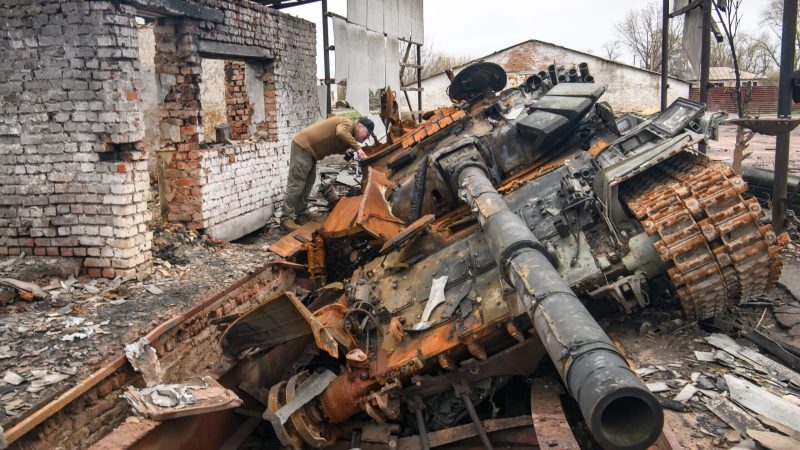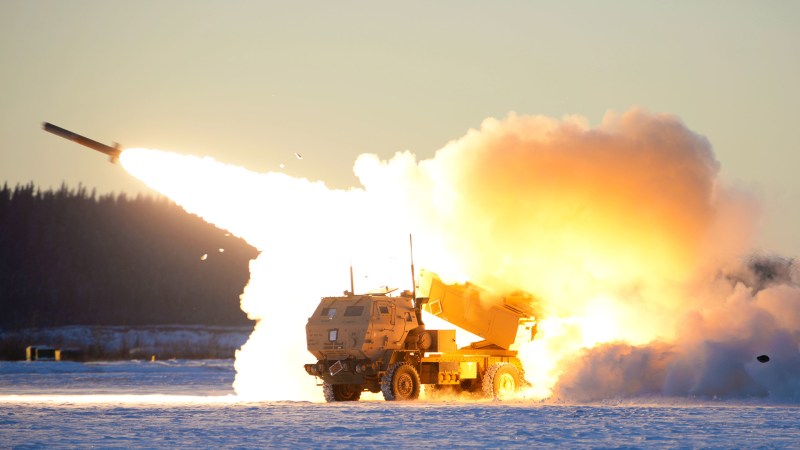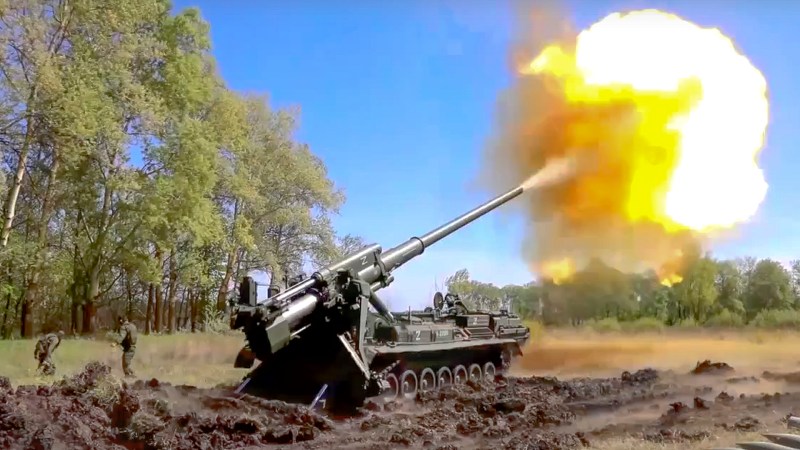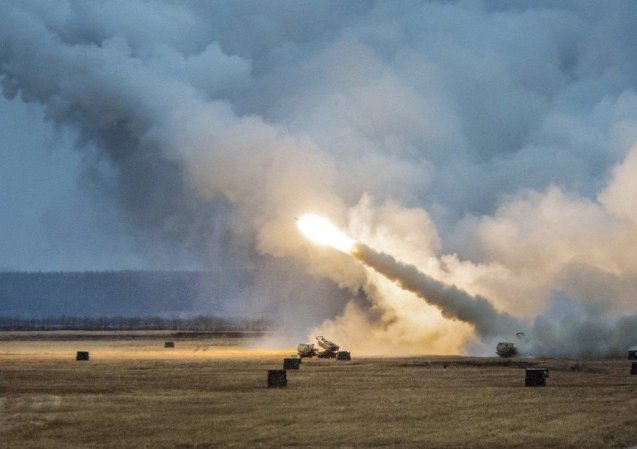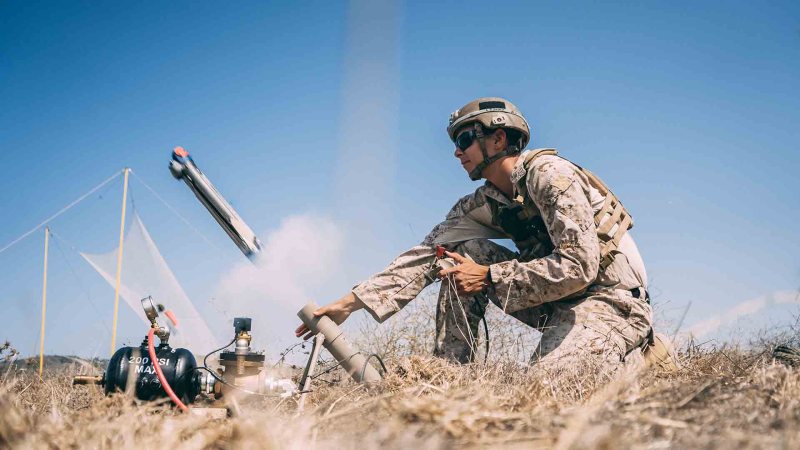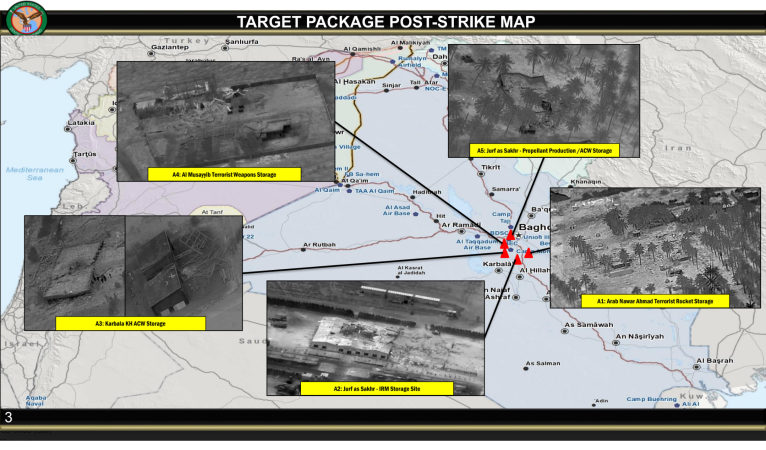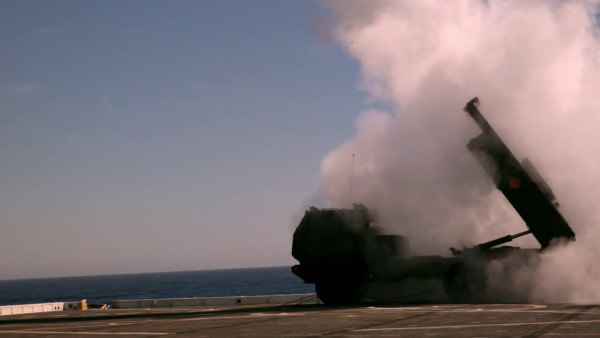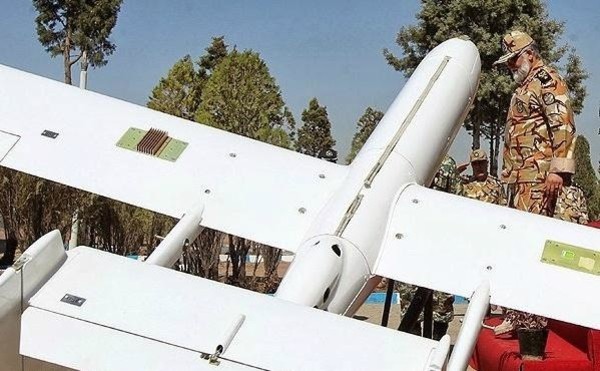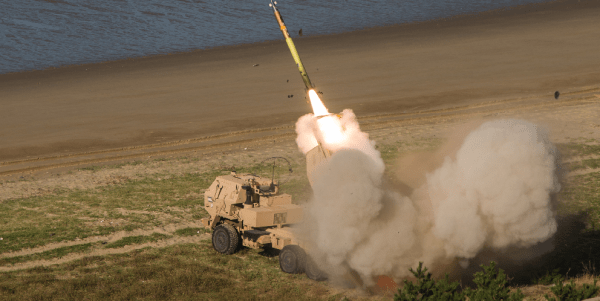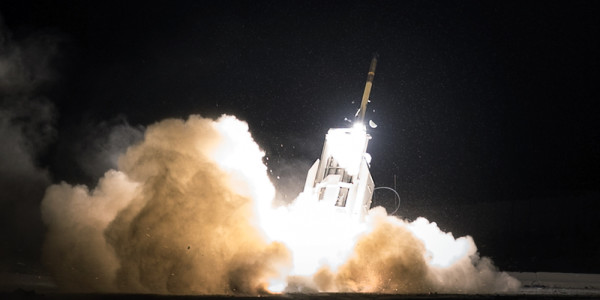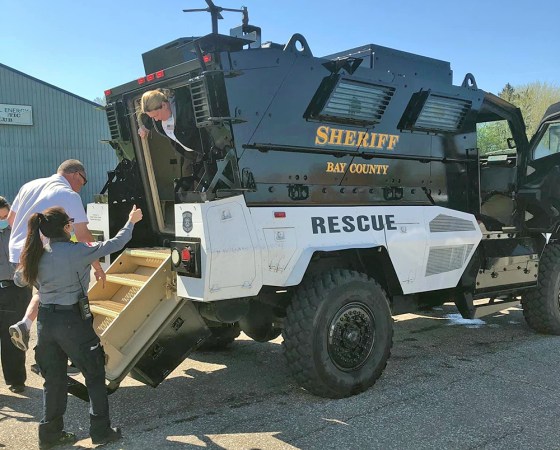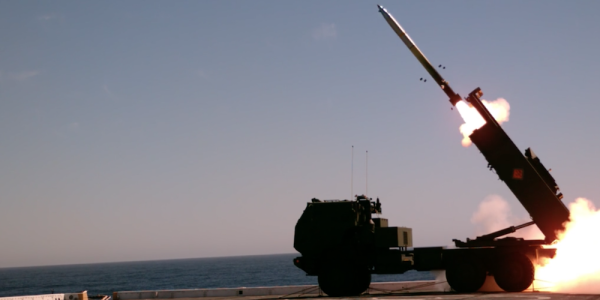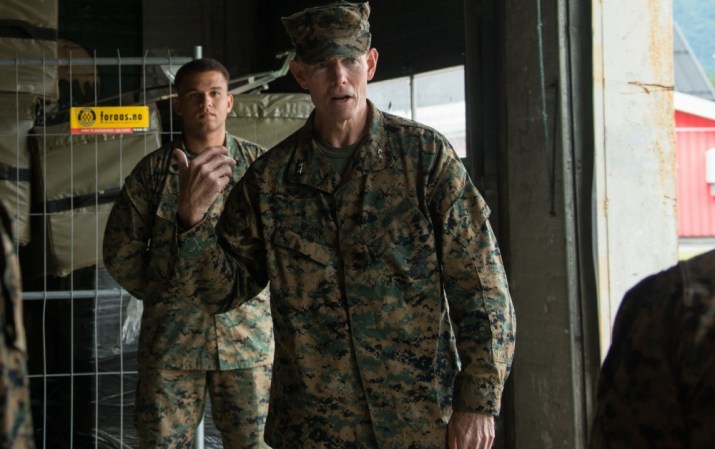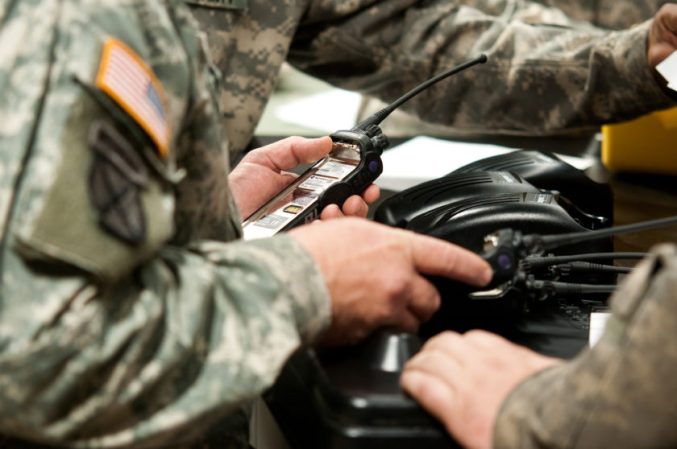More than three months since Russia invaded Ukraine, President Joe Biden’s administration has decided to go full Charlie Wilson by providing the Ukrainians with four High Mobility Artillery Rocket Systems, or HIMARS, that can strike targets up to 43 miles away, Under Secretary of Defense for Policy Colin Kahl told reporters on Wednesday.
Each HIMARS can rapidly fire up to six guided artillery rockets with seekers that lock onto moving targets using Global Positioning System or infrared sensors. Within minutes, a HIMARS crew can fire, move to another position to avoid being targeted by the enemy, and then reload.
Consisting of a single rocket pod mounted on a 5-ton Medium Tactical Vehicles truck chassis, HIMARS is small and light enough to be moved by Air Force C-130 transport aircraft, as opposed to larger C-17s and C-5s.
HIMARS have a reputation as precision weapons. The U.S. military used the rocket systems in Iraq during urban battles to avoid damaging nearby buildings, but in 2010 a HIMARS strike in Marjah, Afghanistan, hit the wrong building, killing 10 civilians, prompting the top U.S. commander in Afghanistan to briefly suspend their use, Wesley Morgan revealed in 2015.

On Tuesday, President Joe Biden announced in a commentary he wrote for the New York Times that his administration would give Ukraine “more advanced rocket systems and munitions,” but he did not initially specify which type of rocket artillery the Ukrainians would get.
Subscribe to Task & Purpose Today. Get the latest in military news, entertainment, and gear in your inbox daily.
Kahl told reporters on Wednesday that Ukrainian troops would need about three weeks to learn how to operate and maintain the first four HIMARS, which are already in Europe. He referred to the four weapons systems as “the first tranche,” but he declined to say how many HIMARS might ultimately be provided to Ukraine.
“We’ll just have to see,” Kahl said at a Pentagon news conference. “We’re providing this initial tranche that would allow for training and familiarization to start to get the systems in the fight. We need to get information too – and the Ukrainians too – about how useful they are and how they are being used on the battlefield. That will give us an assessment and them an assessment about what additional systems or capabilities they might need.”
The United States has already committed to providing the Ukrainians with 108 M777 howitzers, which have a range of about 18 miles. But Russia has a large arsenal of multiple-launch rocket systems that can strike targets much further away.
Retired Air Force Gen. Philip Breedlove, who led both NATO and U.S. European Command from 2013 to 2016, said the HIMARS will improve the Ukrainians’ ability to hold their own in the artillery duels with Russia.
Not only can HIMARS fire rockets much longer and at a much greater rate of fire than Howitzers are able to strike targets, but the rocket system is “pretty dang precise,” Breedlove told Task & Purpose.
“This is a good capability,” Breedlove said. “We are giving them a limited number. We need to give them more, and we need to consider giving them the longer range munitions.”

Rocket systems are also much better than cannons at destroying enemy artillery positions, retired Marine Col. Mark Cancian wrote in a recent commentary for the Center for Strategic and International Studies think tank in Washington, D.C.
Artillery units are designed to be mobile, so once enemy batteries are located, it is essential to hit them quickly with as much firepower as possible, wrote Cancian, a senior adviser with the CSIS International Security Program. HIMARS and other rocket systems can hit enemy artillery positions faster and with more rounds on target than cannon artillery.
Drones can also be used to attack enemy artillery, but a Hellfire missile contains 36 pounds of explosives, compared with a total of 1,200 pounds of explosives in all six HIMARS rockets, he wrote.
Another advantage of HIMARS is they are mounted on trucks, which are easier for the Ukrainians to maintain than tracked vehicles, such as the Bradley chassis used for M270 Multiple Launch Rocket Systems, Cancian wrote.
When asked on Wednesday why the U.S. government waited for months to approve Ukraine’s request for rocket systems, Kahl told reporters that the war has evolved since late February, when the Russians attempted to take Kyiv. Now the war in eastern Ukraine has become “an artillery duel” and the United States along with its NATO allies have run out of Soviet-era artillery systems and ammunition with which to resupply the Ukrainians.
U.S. officials decided to provide the Ukrainians with HIMARS and artillery rockets with ranges of about 43 miles instead of much longer-range munitions that can strike targets more than 180 miles away because “we don’t assess that they need systems that range out hundreds and hundreds of kilometers for the current fight,” Kahl said.
“The core of the battle right now is on Ukrainian territory in the east,” Kahl said. “The systems that we’re providing – HIMARS and the guided munitions that go along with them – will allow Ukraine to range any target they need for that fight inside Ukrainian territory. These systems would not be particularly useful to hit a Russian bomber launching an air-launched cruise missile hundreds and hundreds of kilometers away, anyway.”
Kahl also repeatedly stressed that Ukrainian officials have provided the U.S. government with assurances that the HIMARS they are receiving will not be used to attack Russian territory.
“This particular assurance goes all the way to the top of the Ukrainian government, to President [Volodymyr] Zelensky,” Kahl said.
The latest on Task & Purpose
- The Army chose Sig Sauer for its next-generation rifle and not everyone is happy about it
- Special Operations Command finally found its next-generation personal defense weapon
- An Army vet bodybuilder scammed the VA out of $245,000 while claiming he couldn’t even lift, bro
- How nearly 900 soldiers from Maine earned — and lost — the Medal of Honor
- A-10 pilot explains how the Air Force can outfit the beloved ‘Warthog’ to take on China
Want to write for Task & Purpose? Click here. Or check out the latest stories on our homepage.

